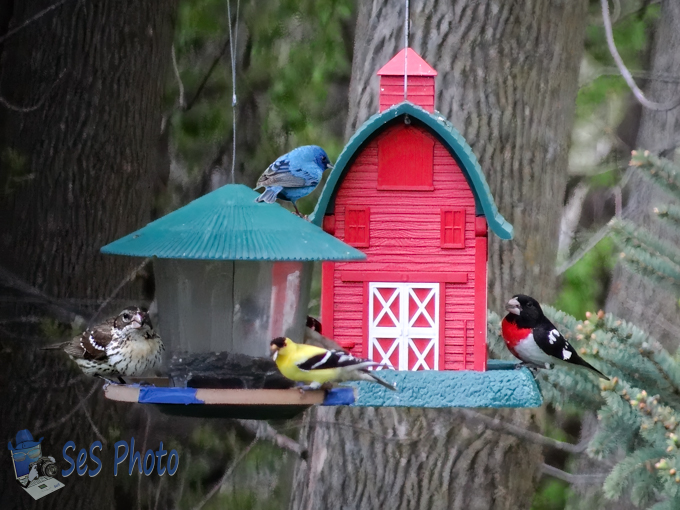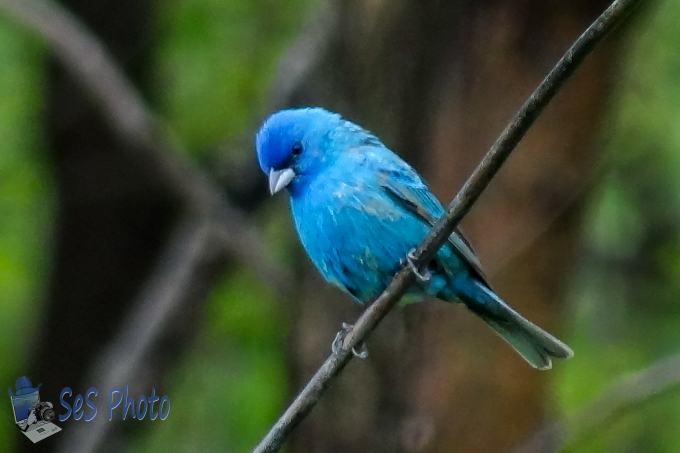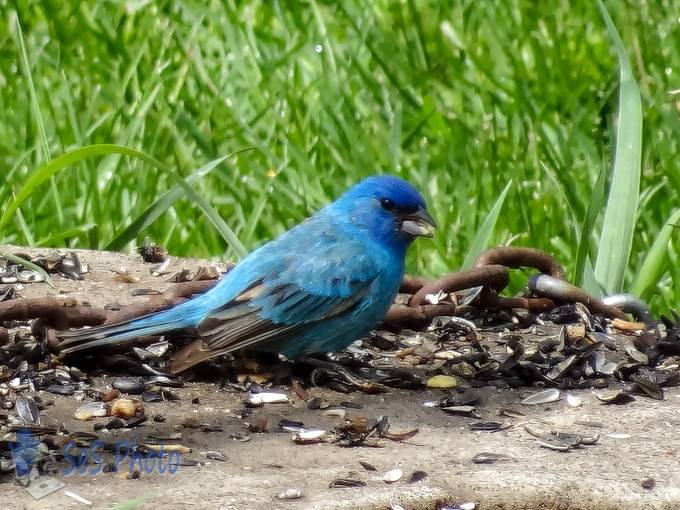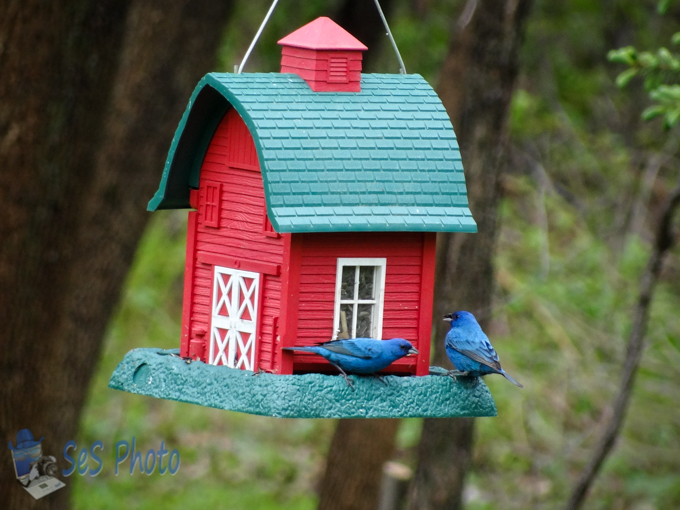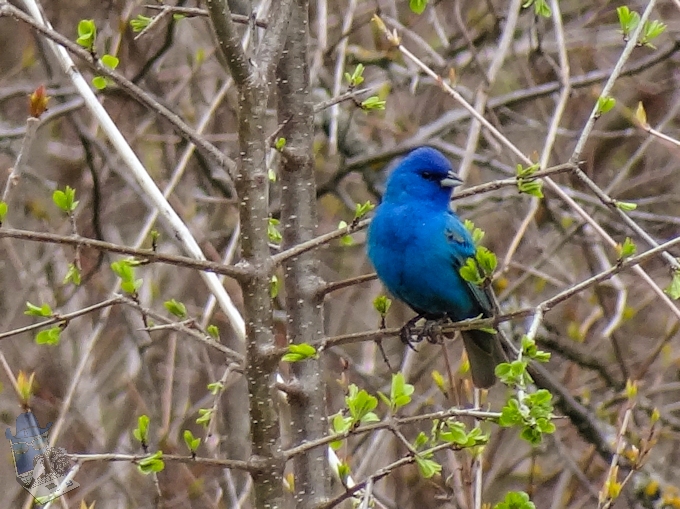As the birds return and the year around birds shed their dull winter coat, the bird sunflower feeders show a rainbow of colors. The Goldfinch summer’s bright yellow feather pop next to the brilliant blue of the Indigo Bunting. And the red patch standout among the white and black of the Rose-breasted Grosbeak.
Rainbow Colors at the Feeder


